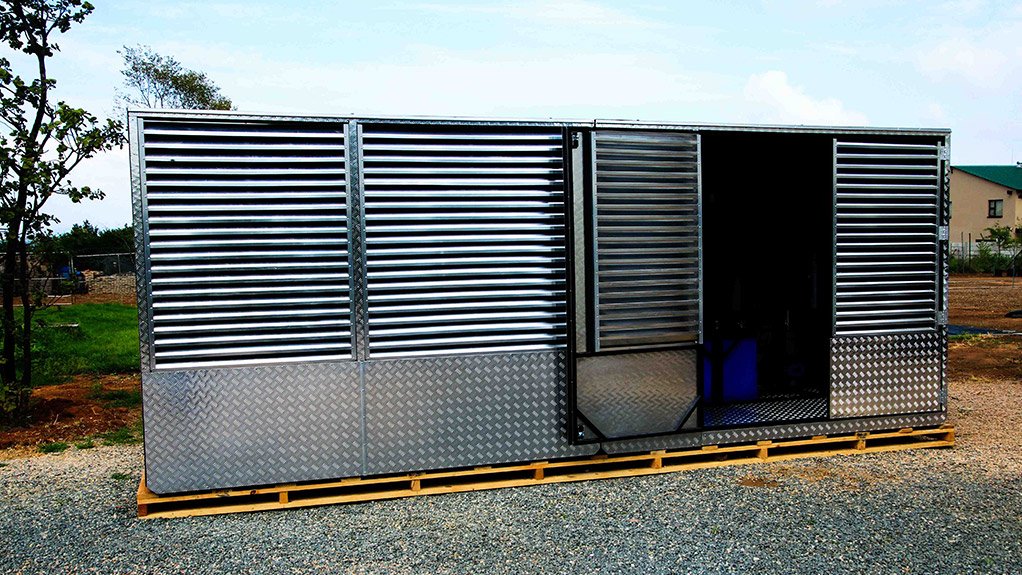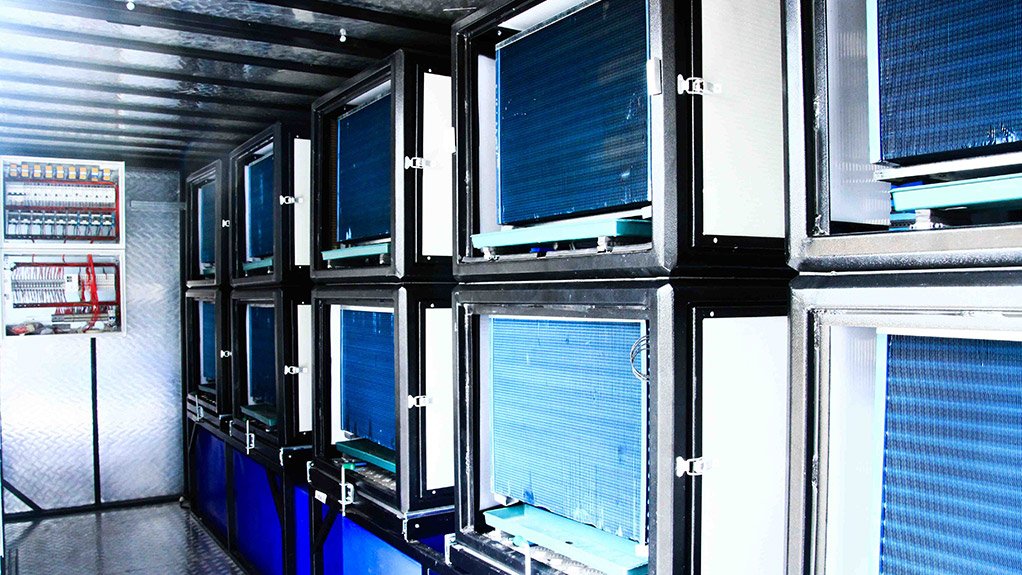Sustainable drinking water solutions provider Cirrus Water Management (CWM) installs atmospheric water generators as a healthier alternative to bottled water, which is also more cost effective and features a much-reduced carbon footprint.
A gas and mining exploration project, in Mozambique, installed an atmospheric water generator in January this year. Other projects using the generators include commercial buildings, such as office parks and colleges; remote businesses, such as bush lodges and oil rigs; and the hospitality industry such as hotels and conference centres in South Africa and Mozambique.
Through a process called atmospheric water generation (AWG), CWM produces an unlimited supply of high-quality drinking water by extracting moisture from the atmosphere, which always contains moisture.
The technology harvests moisture by drawing air into the water generator and cooling it, causing the natural moisture in the air to condense. The condensed water is collected and passed through a simple filtration process that removes any impurities.
AWG plants are placed on site where the water is needed, such as on the roof of a commercial building, on hotel grounds and at mining camps.
CWM sells the atmospheric water generators in modules that each produce 100 ℓ/d of water. This water is sold to any market that requires high-quality drinking water and currently buys bottled water or has on-site boreholes, explains CWM commercial director Bruce Jones.
Jones explains that ownership of an atmospheric water generator comprises capital and operational costs, though a cost-per-litre perspective is preferred, as this is how people view the price of bottled water. Therefore, while the capital cost is being paid off, the water produced and consumed as a result of the AWG process costs about R2.20/ℓ and, once the AWG has been paid off, the price per litre drops to 70c/ℓ.
Bottled Water vs Atmosphere Generated Water
Jones adds that, while most bottled water – which is either filtered municipal water or treated spring water – might be less costly at source, there are many energy requirements and input costs involved, including treatment and filtering, packaging, labelling, ongoing sales and marketing, transport, as well as on-site logistics and disposal costs. By comparison, these aspects are not required for atmospheric water.
“Further, labels do not assure quality. In some cases, water tests have revealed that the quality of some bottled water does not live up to the promises of its labels. The only way to ensure water quality is, firstly, by implementing strict cleanliness regimes, coupled with regular water tests,” he explains, adding that these tests can be done by on-site health officials for simple tests, or by certified laboratories for more comprehensive tests.
Atmospheric water, meanwhile, taps into the free-flowing and abundant water vapour in the atmosphere, while bottled water uses sources that are mostly unsustainable such as springs, rivers and dams.
Bottled water is stored mostly in polyethylene terephthalate (PET) bottles. PET is a polymer, or synthetic plastic, made from oil, and has a negative impact on the environment when it is being manufactured. “Yes, there is an impact on the environment during the production of electricity that generates Cirrus water but this is small, compared with the manufacture of PET,” argues Jones.
Atmospheric water is also produced where it is needed, with no transport impact on the environment, whereas bottled water needs to be transported from its source and place of bottling to where it is consumed. This is normally a multiphase process from bottle manufacturer to bottling plant, wholesaler, retailer and, finally, the consumer.
Jones explains that, though the carbon footprint will vary, it can be significant if the water is consumed far from its source, such as imported mineral water or Cape spring water which is consumed in Gauteng.
Further, 80% of used plastic bottles end up in landfills, leaching chemicals into the ground, while the small percentages that are recycled use more energy during the recycling process.
Atmospheric water, however, is consumed from reusable containers and, therefore, has no consequent disposal issues.
“We encourage using reusable drinking glasses and bottles and, in more rugged environments, reusable aluminium bottles,” he adds.
“Atmospheric moisture is used to create Cirrus water, making it a sustainable solution amid a growing water crisis,” concludes Jones.
Edited by: Samantha Herbst
Creamer Media Deputy Editor
EMAIL THIS ARTICLE SAVE THIS ARTICLE
To subscribe email subscriptions@creamermedia.co.za or click here
To advertise email advertising@creamermedia.co.za or click here















